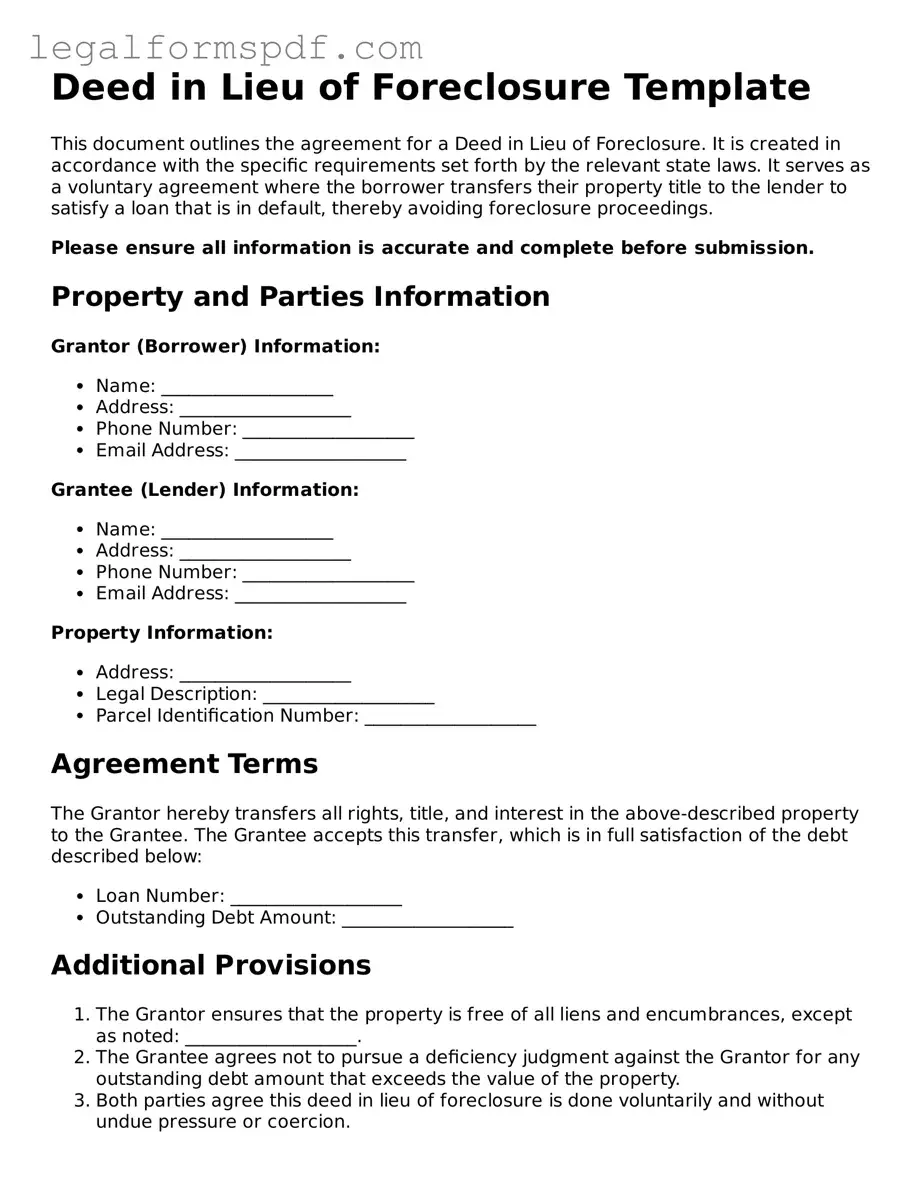What is a Deed in Lieu of Foreclosure?
A Deed in Lieu of Foreclosure is a legal document that allows a homeowner to transfer ownership of their property directly to the lender. This is done to avoid the foreclosure process. It's an agreement that benefits both the lender and the borrower, helping the borrower to avoid the negative impacts of foreclosure on their credit report.
How does a Deed in Lieu of Foreclosure work?
In a Deed in Lieu of Foreclosure, the homeowner voluntarily hands over the deed to their property to the lender. The lender, in return, agrees not to proceed with foreclosure actions. This agreement must be voluntary and entered into by both parties to avoid any potential legal issues.
Are there any eligibility criteria for a Deed in Lieu of Foreclosure?
Yes, there are certain criteria that both the lender and borrower must meet. Typically, the property should not have any other liens or encumbrances, and the borrower might need to demonstrate financial hardship. It's essential to check with the lender, as criteria can vary.
What documents are required to process a Deed in Lieu of Foreclosure?
The required documents can vary by lender but generally include a hardship letter, financial statements, the property deed, and possibly a settlement agreement. All documents must be carefully reviewed and completed accurately to ensure the process goes smoothly.
How does a Deed in Lieu of Foreclosure affect my credit score?
While a Deed in Lieu of Foreclosure can negatively impact your credit score, it is generally less damaging than a foreclosure. It will still appear on your credit report but may be viewed more favorably by future creditors than a foreclosure record.
Can I negotiate the terms of a Deed in Lieu of Foreclosure?
Yes, it's possible to negotiate terms, such as asking the lender to not pursue a deficiency judgment (the difference between the sale price and what is owed) or requesting that the deed in lieu be reported in a specific way on your credit report. However, outcomes can vary based on lender policies and negotiation skills.
Is receiving relocation assistance after a Deed in Lieu of Foreclosure possible?
Some lenders offer relocation assistance programs to homeowners completing a Deed in Lieu of Foreclosure. These programs can provide financial help with moving and housing expenses. Availability and terms depend on the lender and specific circumstances.
Are there tax implications for a Deed in Lieu of Foreclosure?
There can be tax implications, as the cancellation of debt may be considered taxable income. However, there might be exemptions or exclusions available under federal law, particularly if the property is your primary residence. It's advisable to consult with a tax professional for detailed advice.
How long does the process of a Deed in Lieu of Foreclosure take?
The time frame can vary greatly depending on the lender, the complexity of the situation, and how quickly all necessary documents are submitted and processed. Generally, it can take several weeks to several months from the initial application to completion.
Can I stay in my home after completing a Deed in Lieu of Foreclosure?
Typically, the property is transferred to the lender, and the former homeowner must vacate the property. However, some lenders may offer a leaseback or rental agreement that allows the former homeowner to stay in the home for a designated period. These agreements are less common and would need to be negotiated separately.
